Development of the M706
Terra-Space division of the Cadillac Gage company designed in 1960 4x4 amphibious armored vehicle, expecting to fulfill the future needs of the army. The later required some sort of Jack-of-all-trades, a multi-purpose, 11-man APC, reconnaissance vehicle, convoy escort, command, patrol and a riot vehicle. By 1962, the patent was filed, and the projected vehicle named Commando. Development was fast as in 1963, the prototype undergone its first tests. The same year, the definitive production vehicle, the V-100, was tested thoroughly in Vietnam before the production was started in 1964. Total production figures are ellusive but at least 10 000 vehicles of the V-100, 150 and V-200 variants were delivered by CGC, then the Textron Marine & Land Systems company. The M706 is currently replaced by the M1117 since 1999, but still in service in many countries. The Philippines are one of the most prolific users of the model.Design
To kept the prices low, the vehicle used many existing components. The axles were similar to the M34 truck series while the engine was the same V8 Chrysler, 360-cubic-inch gasoline that powered the M113 armored carriers. It had a 5-speed manual transmission. These allowed a top speed of 62 mph (100 kph) over rough terrain. Its 4x4 independent sprung roadwheels had massive tires to reduce ground pressure. The CGC can also swim at 3 mph (4.8 kph). Protection was provided by the "Cadalaloy", a custom 0.25 in hardness alloy steel, protecting against small arms fire (7.62 cal.). This protection was also given by the well-sloped monocoque welded hull, also protecting the crew from mine blasts. However the alloy was not espcially light, and the empty weight of the vehicle was 7 tons.This took its toll on the rear axle, which frequently failed, and not designed to support this extra load. Access was allowed from the two side doors and the turret cupola hatch. Vision was provided by height vision blocks (at first ten) with armored glass, and the revolving turret which featured a peripherical vision with ten vision blocks, plus a periscope. For close-fire, six pistol ports were also provided on the upper sides. The hull featured also an internal modular arrangement with interchangeable components, aimed at the export market. The CGC accepted a large array of weapons. The first military version V-100 was usually armed with the same revolving turret that equipped the M113, armed with a twin M37 browning cal.30 (7.62 mm). This was in standard, but some versions received an upper open superstructure and one to three Browning cal.50 (12.7 mm), the front one being protected by an armored shield. Later on, the revolving turret was equipped with smoke dischargers and an M2 cal.50. Additional supports were sometimes welded for extra M60s. An export version accepted an M134 7.62mm Minigun. The V150 and V200 were more heavily armed and better used for recce and support. According to the Wall Street Journal in 1965, the base price tag for the M706 Commando was 24.500 $.
The V100
This was the main, early production version. Apart from the facts given above, there were two basic versions, a turret one, and an open-top version, with added upper protections. The side door, at first, in a single piece, was later produced in two parts. In 1964, one of the XM 706 prototypes tested a 20 mm armed turret, which never made it before the reinforced and longer V-150. The vehicle impressed the ARVN (Allied south Vietnamese Army which became the first customer of the V-100, apart from the ATAC (US Army Tank & Automotive Command). A 40 mm automatic grenade launcher and new turrets were also quickly developed since the AVRN complained about the lack of firepower of the twin cal.30. But the project failed to meet the US Army requirement and failed to materialized after US troops disengaged from VN in 1972-73. The USAF received the XM706E2, with an open-top center parapet with a single M2HB machine gun under mask assisted by an M60 or two. Some were still in service at Clark AFB in the Republic of the Philippines in 1988. In patrols, a crew of 12 was often seen, but it was systematic in ARVN forces.The V200
The development was assumed by the Marine and Land Division of the Textron company. It was an elongated V-100 (in the middle section), partly based on U.S. Army's 5 ton trucks components. It was built solely for export for the needs of the Singaporean army, or Singapore Armed Forces (SAF). They were modernized by ST Kinetics in the early 2000s and are still in service. Today singapore has 250 of these in service, plus 30 V-100 and 50 V-150. It seems this one was the inspiration for the Dragoon 300 made by Arrowpointe Corp.The V150
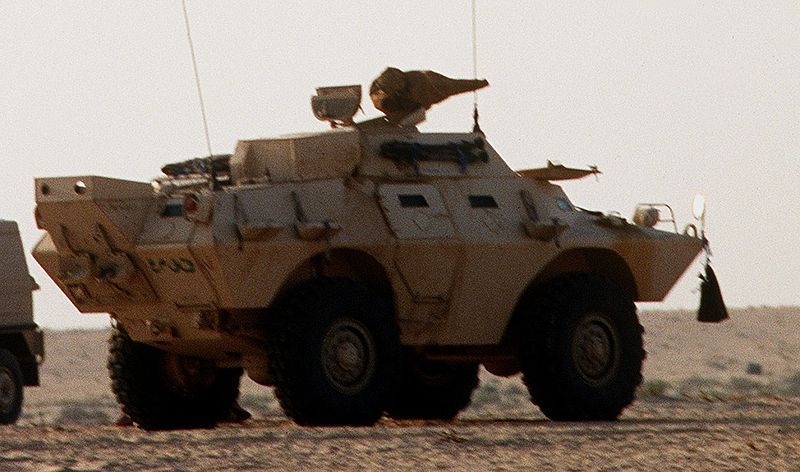
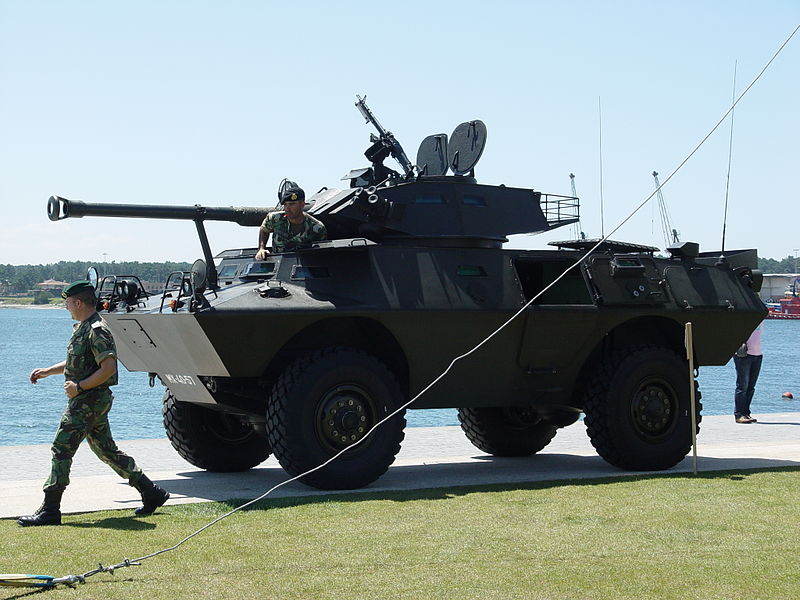
A Cadillac LAV-150 of the Portuguese Army
This vehicle was based partly on the V-100, and the V-200. This hybrid was shorter but stronger and couldaccommodatee much heavier turrets and armaments, and could be equipped with diesel or gasoline engines. Built for export, it was equipped with a large variety of armament configurations, including 12.7 mm and 20 mm armed turrets. Portugal had its V-150s modernized in the 1970s as the Chaimite, with a 90 mm Cockerill gun turret, known as the V-400 variant. 2,968 LAV-150 vehicles were produced. The list of operators includes Bolivia (10), Bostwana (36), Cameroon (43), CHAD (9), Dom. Republic (8), Gabon (9), Guatemala (7), Haiti (6), Indonesia (200), Jamaica (13), Kuwait (20), Malaysia (184), Mexico (28), Philippines (165), Qatar (8), Saudi Arabia (1100), Singapore (280), Somalia (10), Sudan (100), Taiwan (300), Thailand (162), Turkey (125), USA (10), Venezuela (130), Vietnam (5).
Other variants
The LAV-300 is a 6x6 version, partly based on the V-150. The LAV-600 is developed from the LAV-300 with much heavier weapons, the most common being the 105 mm. By 2013 Textron unveiled the Commando Select 90 mm Direct Fire, a new model aimed at export-market, armed with a CMI Defence Cockerill CSE 90LP weapons system and asked to perform a large range of misssions from conventional combat to counter-insurgency operations.Active service
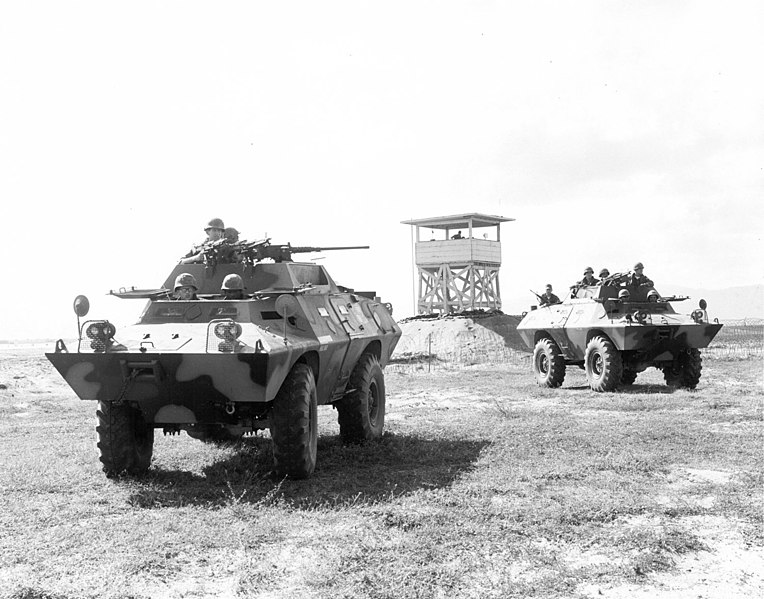
V-100 Commando in Vietnam, guarding Tuy Hoa airbase in 1968
The characteristic sloped hull of the CGC quckly earned the nicname "duck" or "the V" in Vietnam, which was its first active assignation. CGCs were massively deployed there, as available, for patrolling the DMZs and acting as military police vehicle, guarding AFBs (Air Force vehicles), and for other tasks. These were hard-pressed, especially at the time of the Têt offensive in 1969 when Viet-Minh commandos attacked several key points in Saigon and many other important cities. ARVN forces also actively used their vehicles after US troops disengaged from Viet-Nam in 1972-73. Many were captured by the NVA. After Vietnam, these vehicles saw limited use, and were affected to specific areas, like the Herlong Army Depot in California, and spent as targets.
Former Haitian Army V-150 Commando seized at Port Aux Princes, Operation Uphold Democracy
Other armies held their vehicles in service for longer periods, especially the Philippines. Many are still in operations. Outside these regular armies (Royal Thai Army, Republic of China Military Police, the Philippine Army, Marine Corps & Special Police Action Force, the Lebanese Armed Forces, the Army of Venezuela and the Jamaican Defence Force.), these vehicles has been used by many other operators for crowd control and anti-riot operations. SWAT teams also used some, as well as the LAPD. Later in 1991 gulf war, Saudi Arabia's guards V-150S took part in the battle of Khafji against Iraki forces.
M46 links & resources
The CGC M706 on WikipediaOn Global security
About the V-150
CGC M706 V100 specs |
|
| Dimensions (L-w-H) | 18ft 7in x 7ft 5in x 8ft 4in in (5.69 x 2.26 x 2.54 m) |
| Total weight, battle ready | 9.8 tons (21 800 lbs) |
| Crew | 3+2 (Commander/radio, Driver, Assistant driver, Gunner, loader) |
| Propulsion | V-504 V8 turbocharged diesel engine, 202 bhp, ptw ratio 18.75 bhp/ton |
| Maximum speed | 60 mph (100 km/h) road, 3 mph water |
| Suspensions | Independant, 4x4 |
| Maximal range | 400 miles (643 km) |
| Armament | Main: twin M37 Browning cal.30 (0.3 in) MGs. See notes |
| Armor | 0.25 in (6.35 mm) |
| Production (V100) estimated | 5000 |
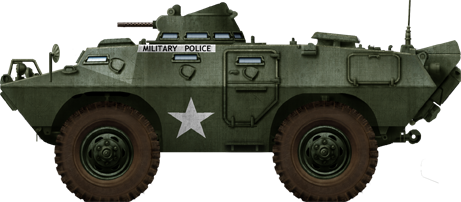
CGC M706 "Blindfaith" of the Military Police in Vietnam.
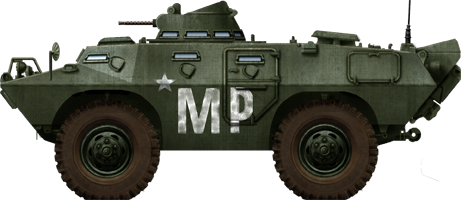
Another Commando of the MP in Vietnam, late 1960s.
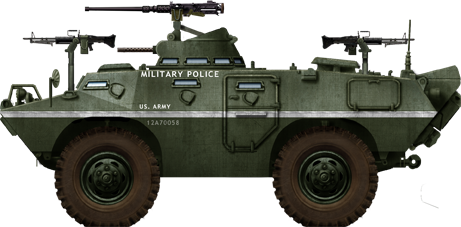
Cadillac Gage Commando M706 V100 "The Unexpected", Military Police, Vietnam, 1968-71.
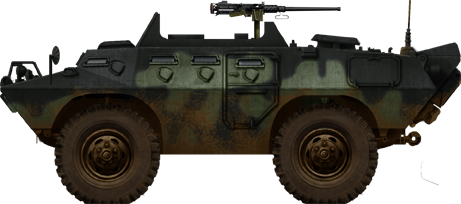
Camouflaged CGC M706 V-100 of the US Army, Viet-Nam late 1960s.
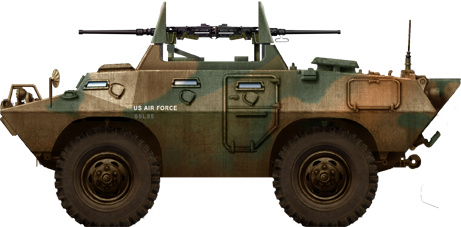
Patrol M706 V150 of the US Air Force at U-Tapao AFB, Vietnam 1971.
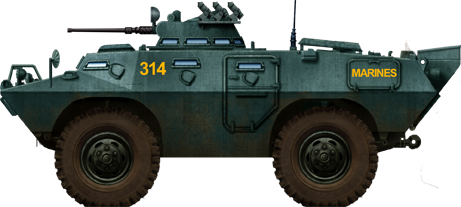
V150 of the Philippine Marines, late 1970s.
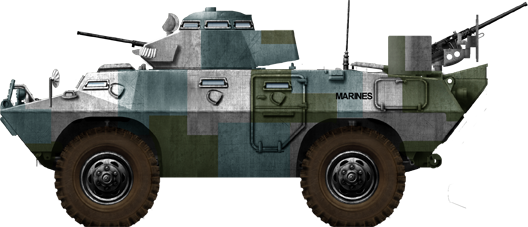
V150S PMRF-PMC upgraded with a rear-mounted cal.50. Philippine Marines (urban camo), 1980s.
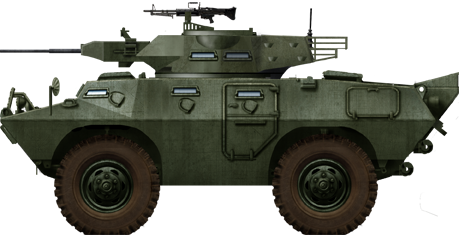
Textron LAV-150 with 20 mm turret for export.
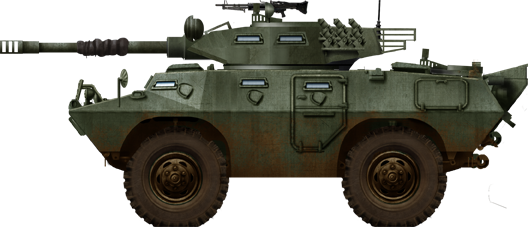
Textron LAV-150 with 90 mm turret.
CGC M706 gallery
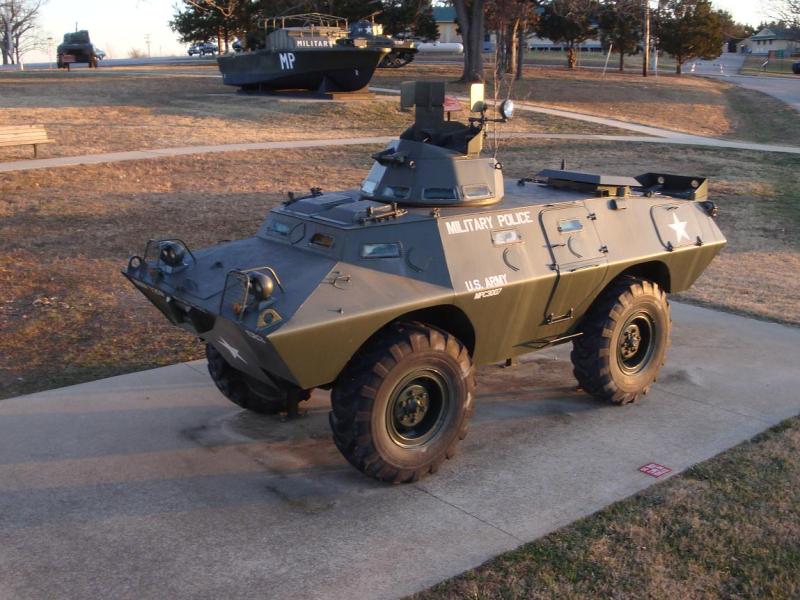

Cold War Tanks


































Cold war tanks posters

Cold War Main Battle Tanks

Cold War Soviet Army
Museums, Movies, Books & Games
The Tanks and Armor in pop culture
Tanks and armored vehicles in general are only really grasped when seen first person: The mass, the scale, it's all there. Explore also the way tanks were covered in the movie industry, in books and in video games.Movies:
Best tanks movie on warhistoryonline.com
On imdb.com
On bestsimilar.com/
miltours.com
liveabout.com/
watchmojo.com
Video Games:
pcgamesn.com
historyhit.com
levvvel.com
vg247.com/best-tank-games
mmobomb.com/
alienwarearena.com

